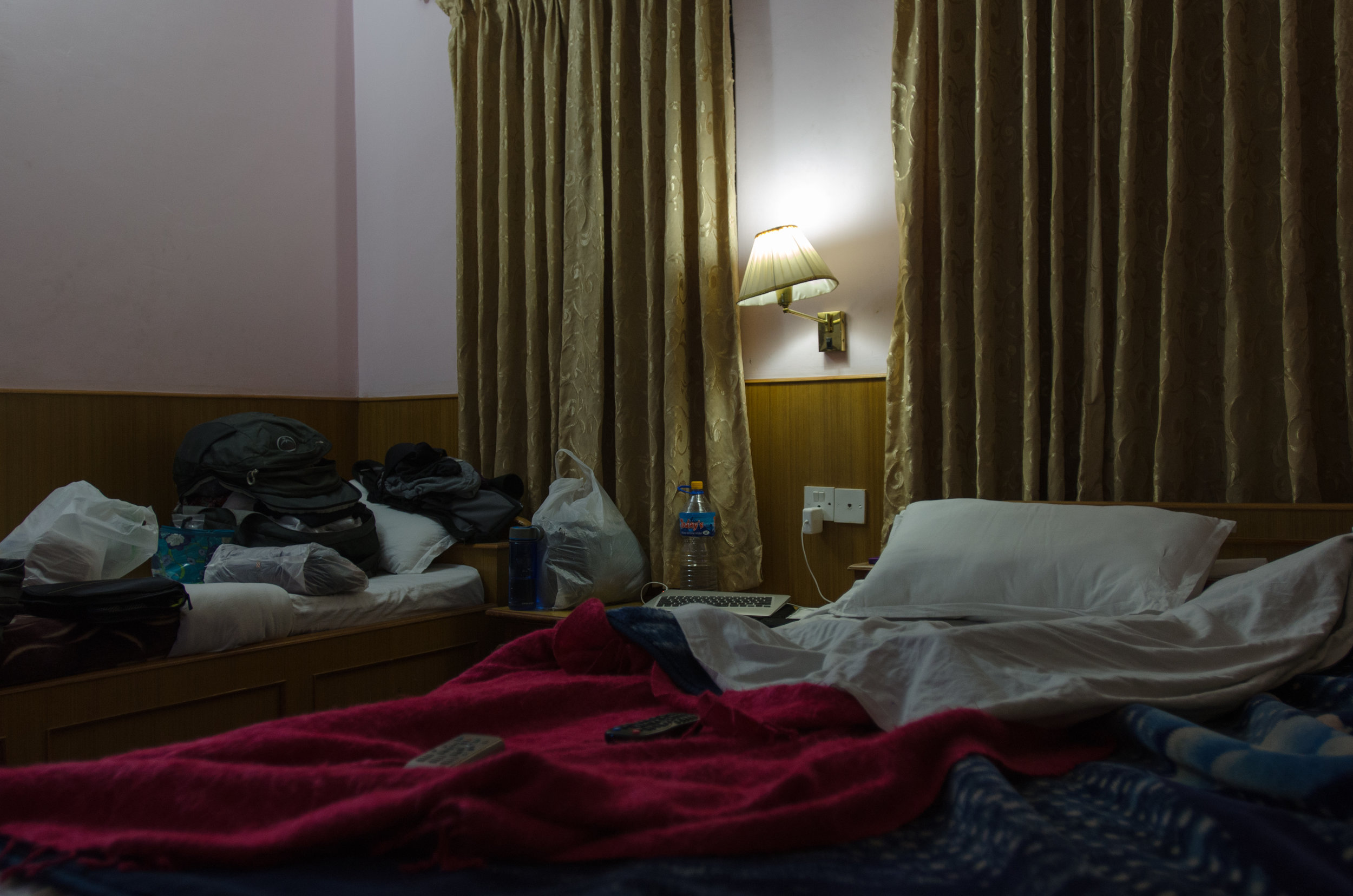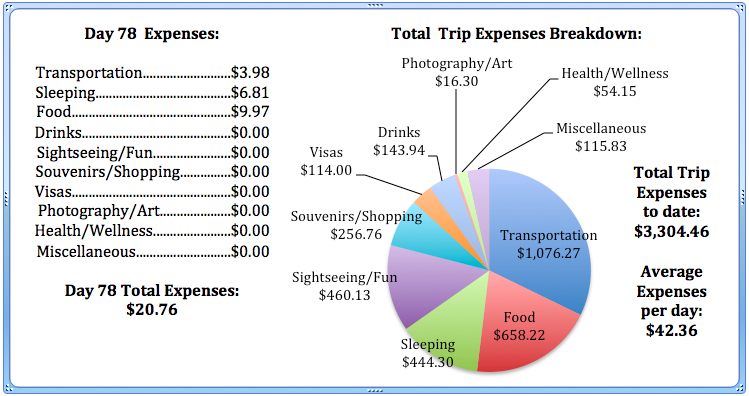As it turns out, Phewa (or Fewa) Lake is one popular spot with the locals. We walked down towards the lakefront and were stunned to see crowds of Nepalese, school buses lined up on the street, food and souvenir vendors lined up on the sidewalk. It was a zoo. And then once we got to the lake itself, we could see why. It was beautiful. Brightly colored rowboats floated next to the dock with the Himalayas in the distance. And the Peace Pagoda looked down upon all of it on the other side of the lake. Lonely Planet offered three different routes up to the pagoda. Having the whole day ahead of us, we opted for the longest route.
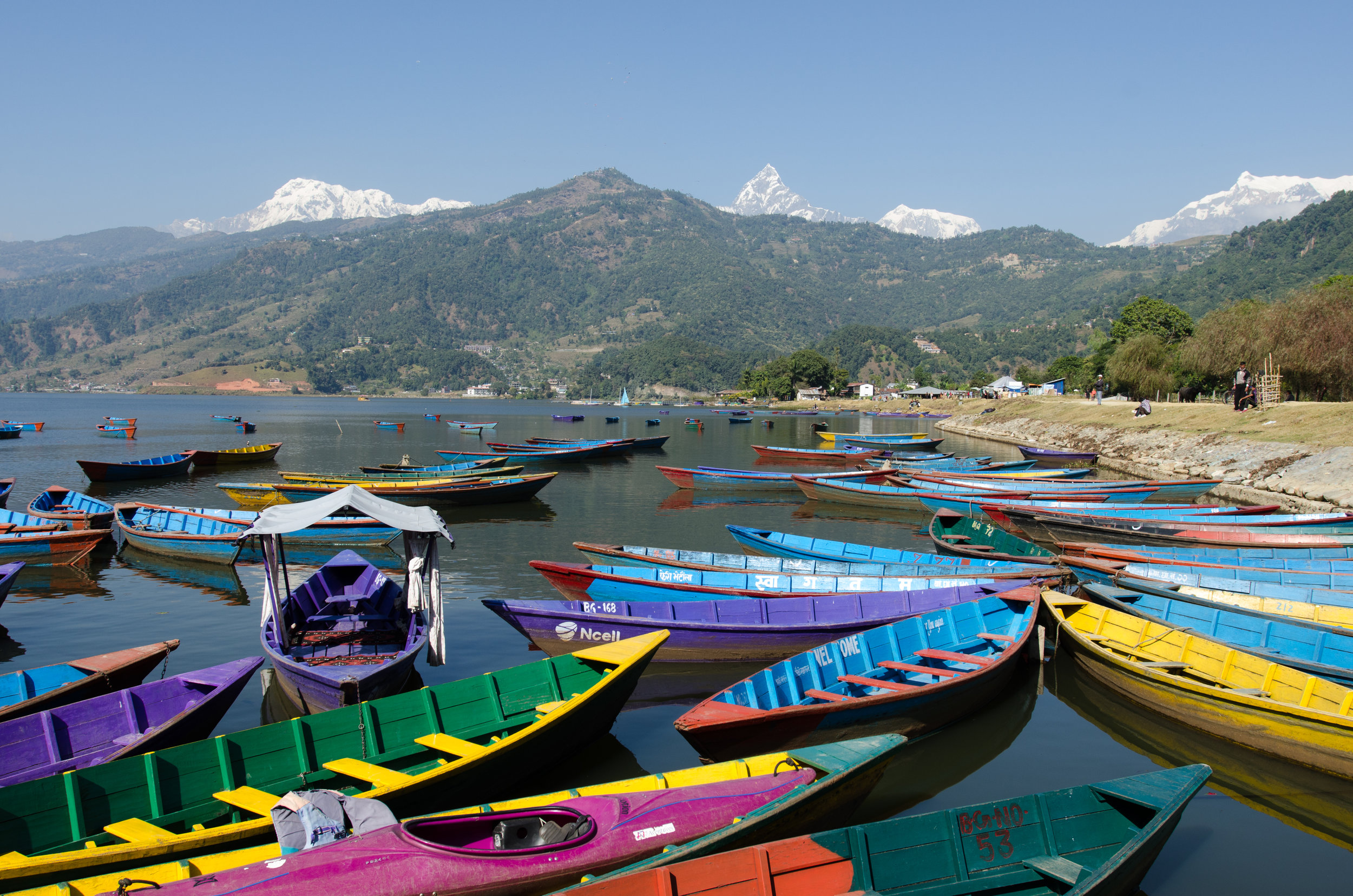
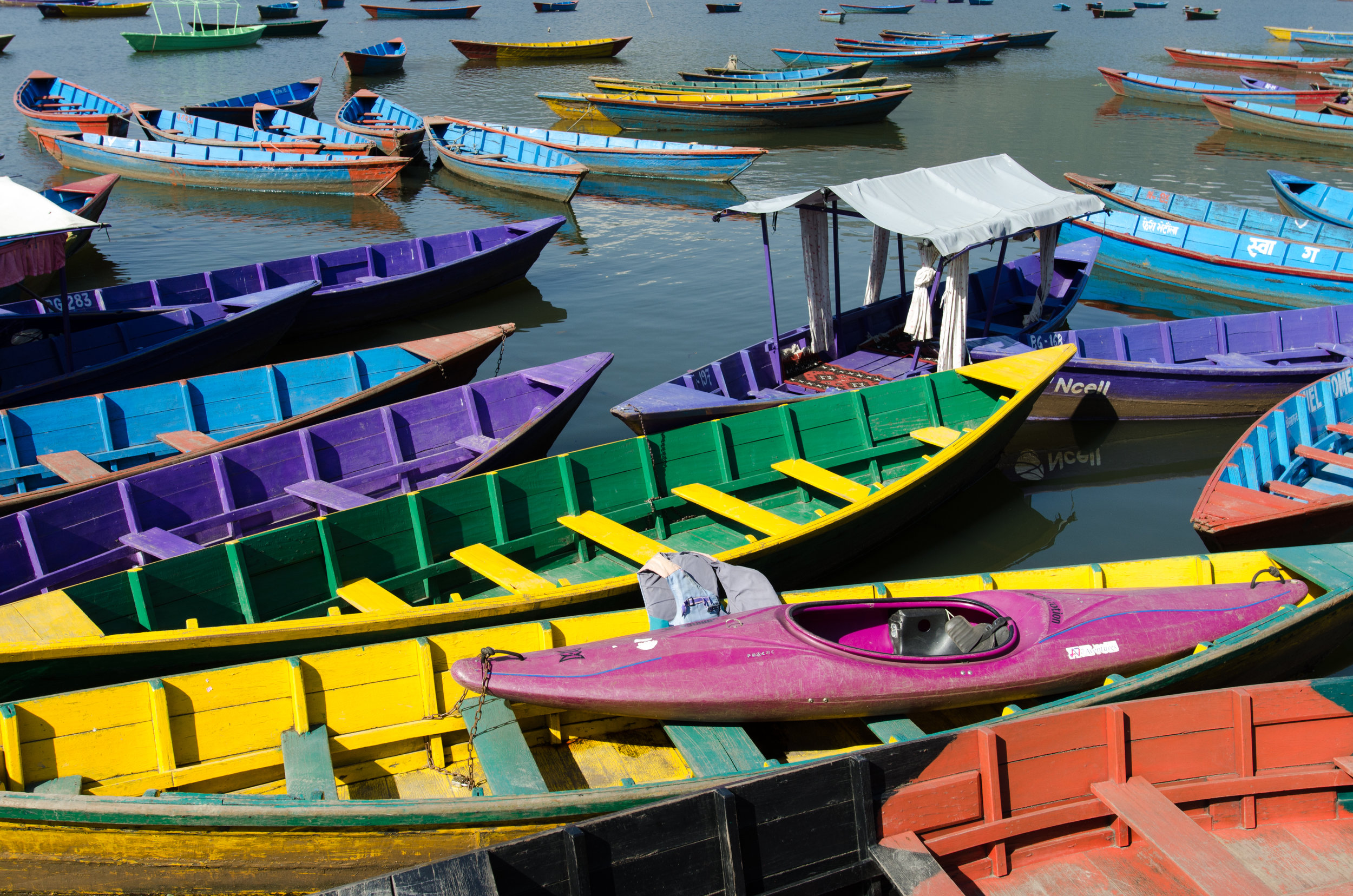

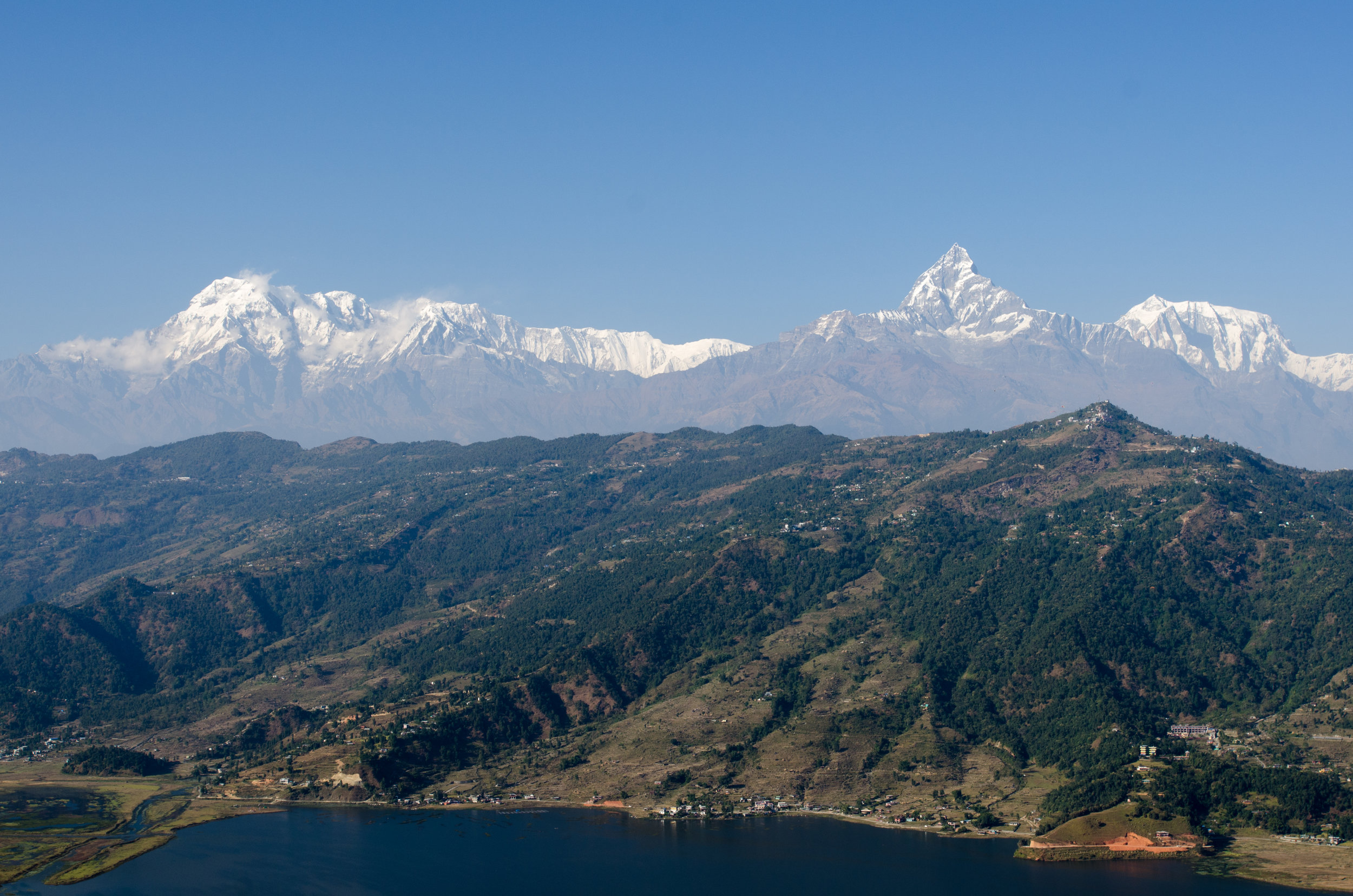
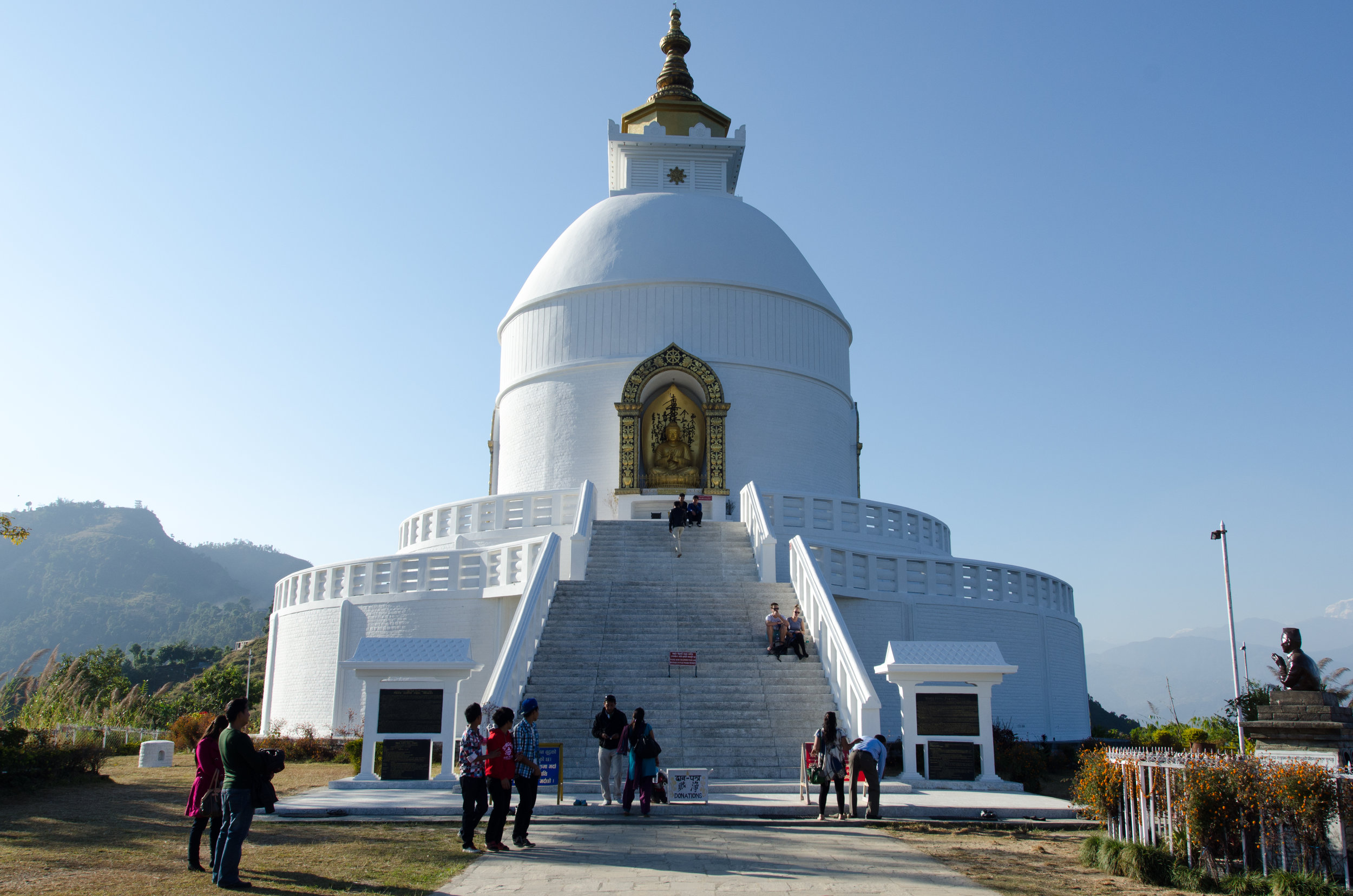
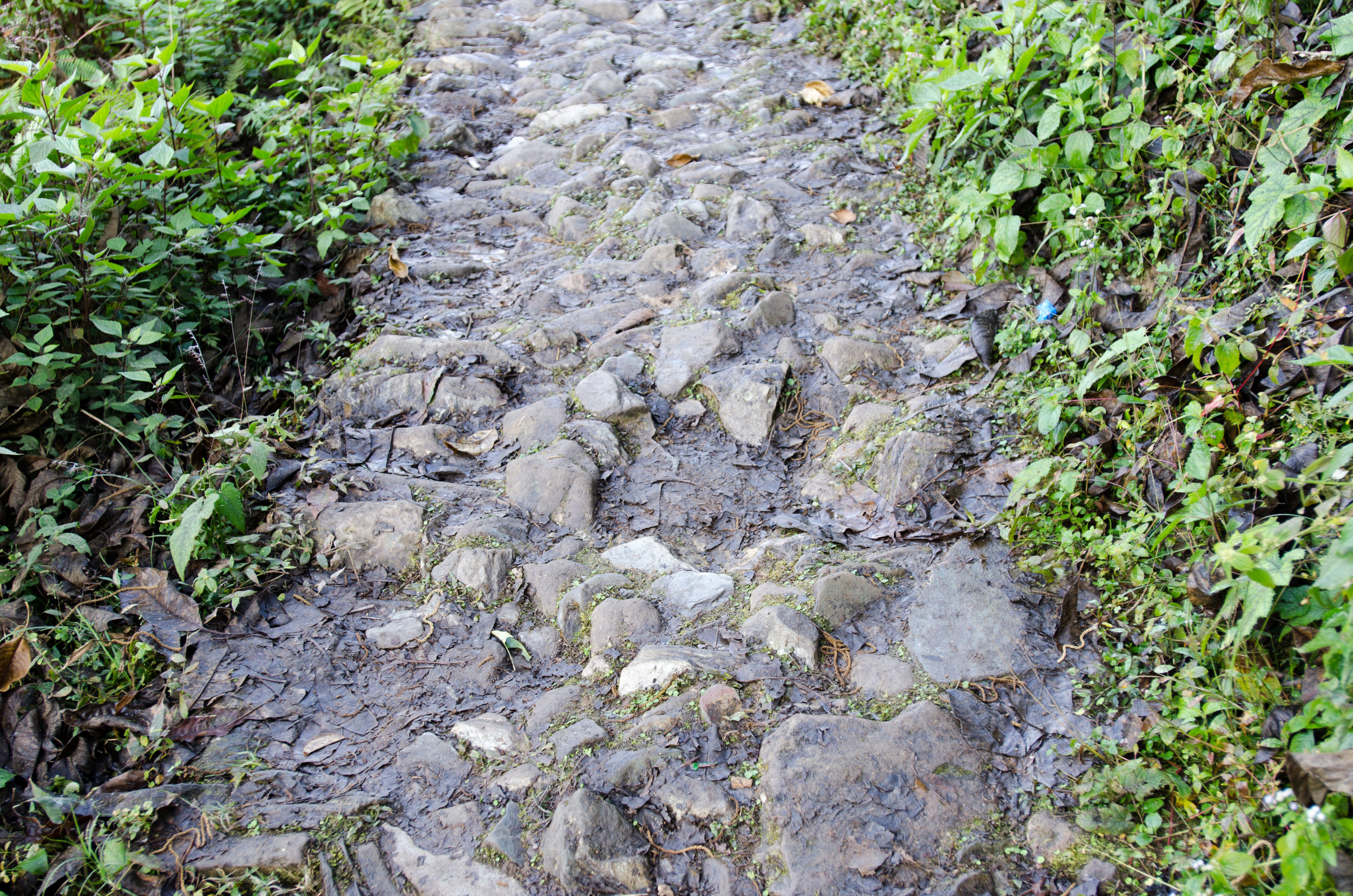
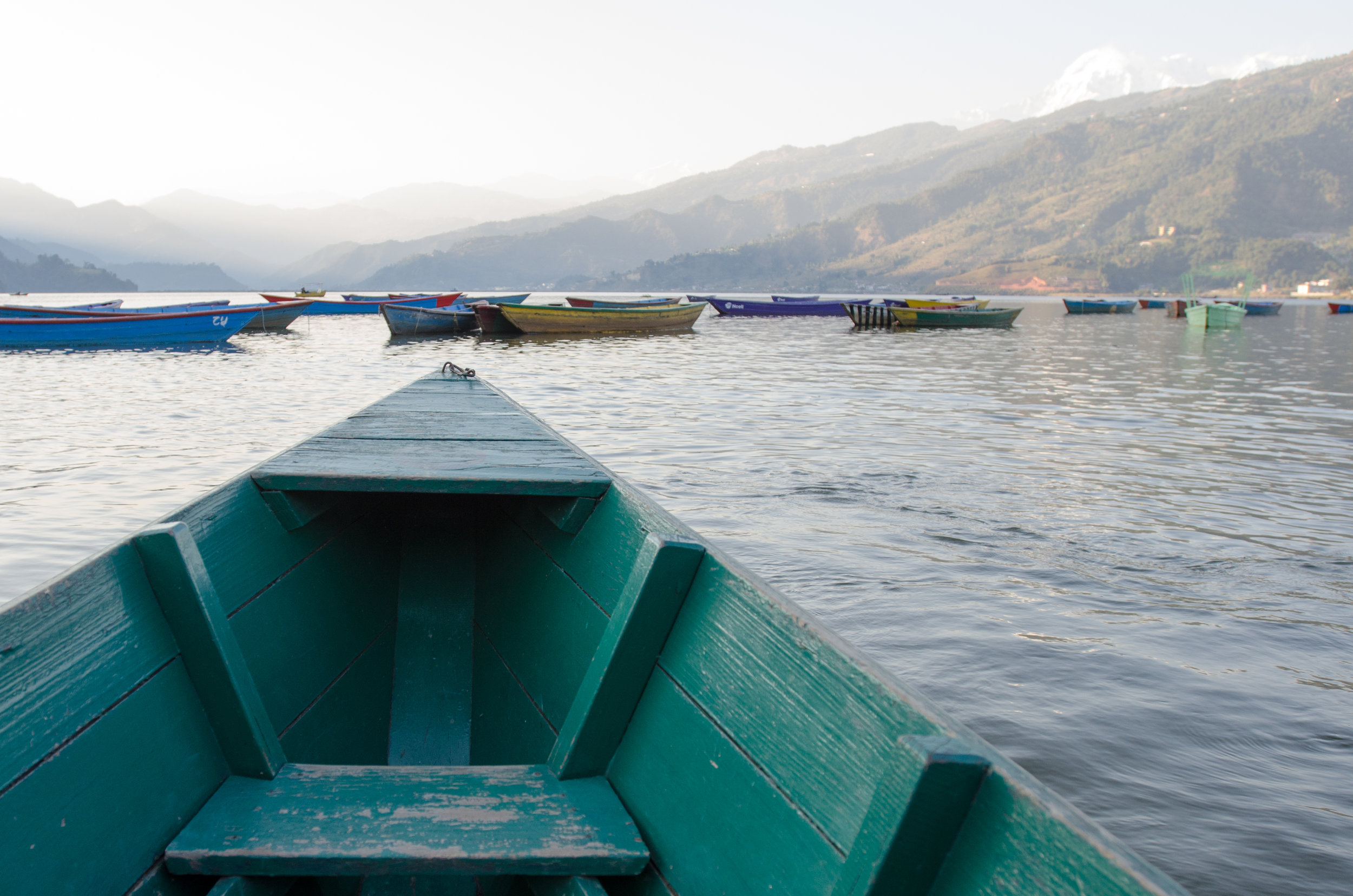
That is, until we had to ask for directions. Twice, and still didn't understand where we were supposed to go. Lonely Planet: You totally failed this one. Not wanting a repeat of yesterday's failed attempts to find Old Pokhara, I opted to take a taxi halfway so we wouldn't end up walking up and down a mountain without reaching the pagoda. This was a fabulous idea, until our driver dropped us off at a small dirt path and said something neither of us could understand. The dirt path wasn't all that bad, but when it dumped us back on a main road, with little shade, lots of dust, and lots of traffic (stirring up said dust)… I grew weary of our decision. We've come to accept that most of our decisions in Nepal weren't good ones, but that doesn't make them any easier. By the time we reached the pagoda, we were covered in dust and a bit worn out.
The World Peace Pagoda is an initiative for peace and a Buddhist stupa built by Most Honorable (as it stated on the information plaque at the entrance) Fuji, a Japanese Buddhist monk. The 80 (possibly more) pagodas around the world were inspired by Most Honorable Fuji's meeting with Gandi in 1931. The pagoda was peaceful, the view was breath-taking, and then there was the descent down the mountain.
One of the NGO workers we met and lunched with in Chitwan said she climbed up and down the Pagoda in a pair of flip flops. We followed her lead, and then cursed ourselves for not asking specific questions about her shoe choice. The trail we descended (although easier to find, less dusty, and full of shade) required hiking boots. At least a pair of shoes with more padding than our worn down flip flops! By the time we got to the bottom of the mountain and crossed the lake, we were not happy campers.
A little advice if you find yourself in Pokhara anxious to climb up to see the Peace Pagoda: take taxi the entire way there and back (although it'll cost you at least 1000-1200 Rs) or cross the lake by boat (300-400 Rs each way) and take the trail from the lake there and back. Wearing the proper shoes, of course!
